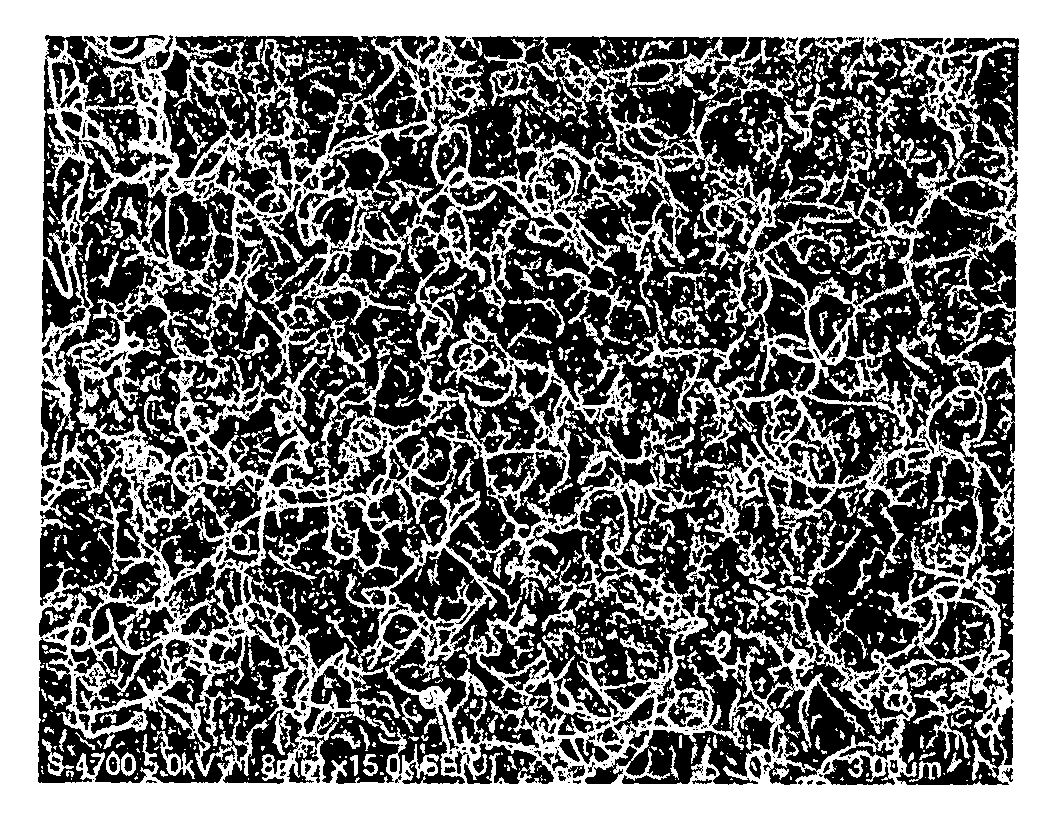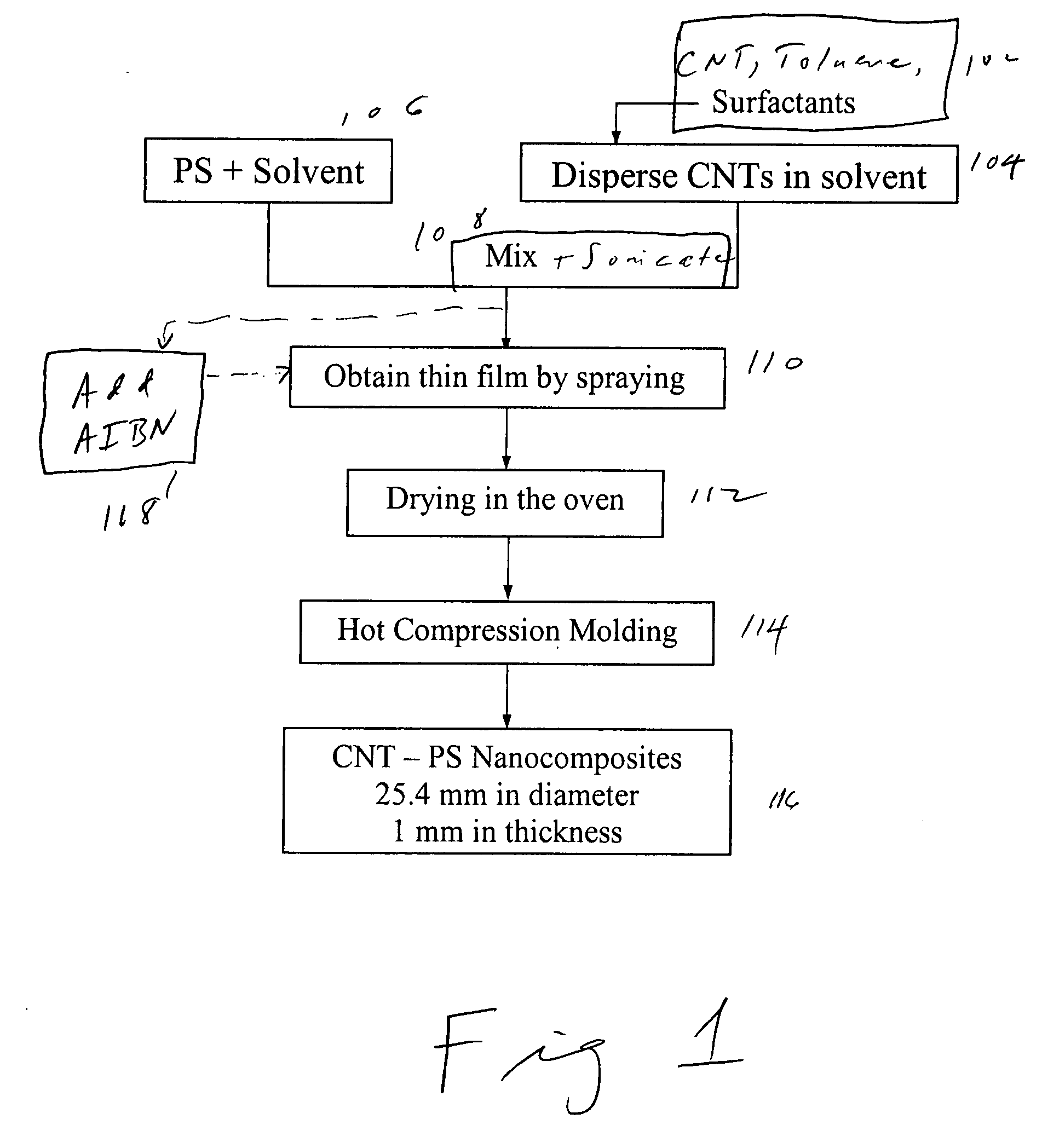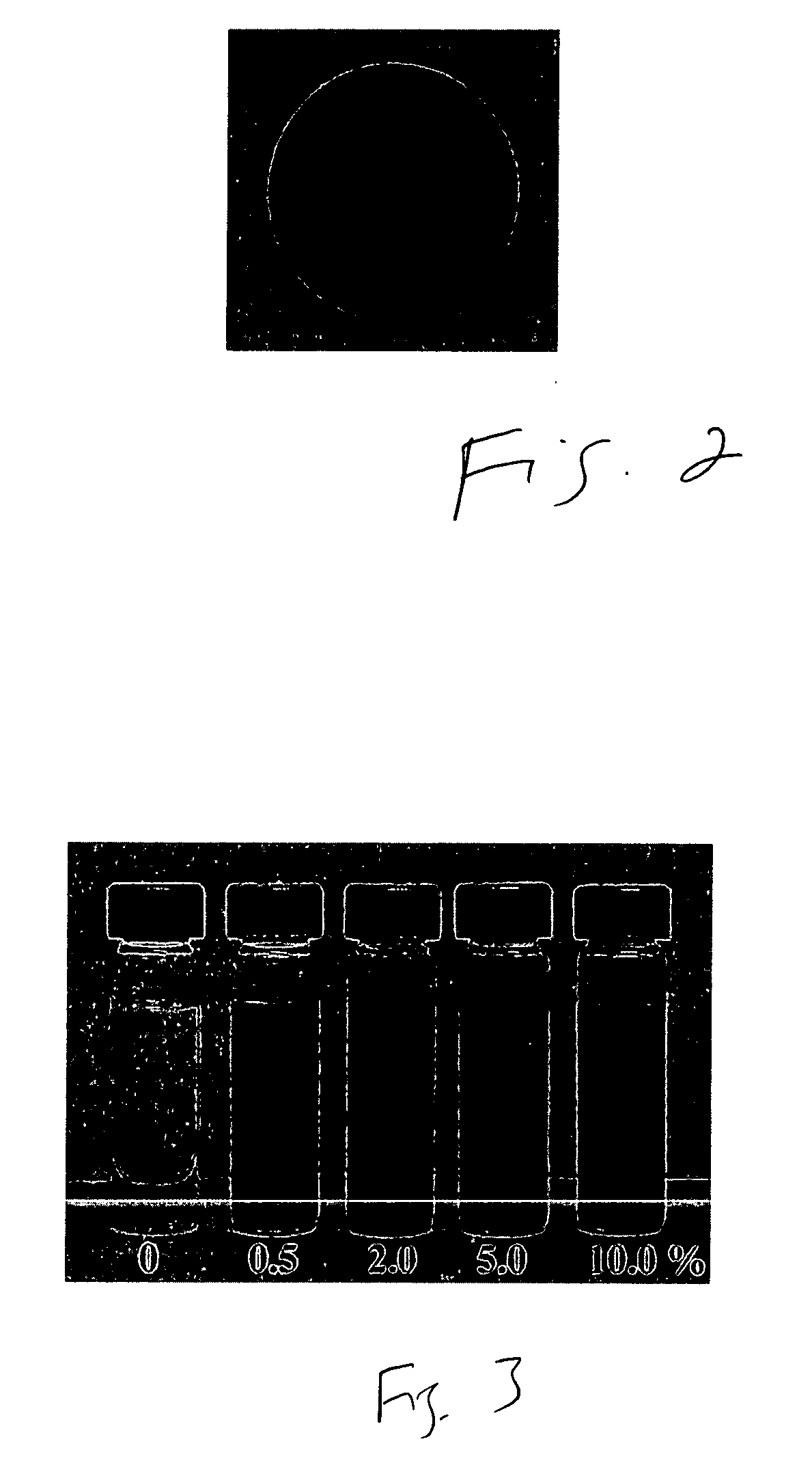Conducting Nanotubes or Nanostructures Based Composites, Method of Making Them and Applications
- Summary
- Abstract
- Description
- Claims
- Application Information
AI Technical Summary
Benefits of technology
Problems solved by technology
Method used
Image
Examples
Embodiment Construction
[0033]A preferred embodiment of the present invention will be disclosed in detail with reference to the drawings, in which like reference numerals refer to like elements or steps throughout.
[0034]FIG. 1 is a flow chart showing the preparation procedure according to the preferred embodiment. Initially, in step 102, a fixed amount of nanotube was dispersed in a toluene solution containing a nonionic surfactant. The solution was contained in an ultrasonic bath in step 104 to obtain a dispersed nanotube suspension, which was then combined with the polystyrene solution in toluene, provided in step 106, to mix them in step 108. The final mixture was further sonicated to give a black-colored stable solution with no detectable solid precipitation. The resulting solution was sprayed onto a flat plate in step 110 by a micro-sprayer and dried at room temperature. Subsequently, the dried film was thermally cured in an air-circulating oven in step 112 to remove toluene from the thin film. A seri...
PUM
| Property | Measurement | Unit |
|---|---|---|
| Dielectric polarization enthalpy | aaaaa | aaaaa |
| Electrical conductivity | aaaaa | aaaaa |
| Concentration | aaaaa | aaaaa |
Abstract
Description
Claims
Application Information
 Login to View More
Login to View More - R&D
- Intellectual Property
- Life Sciences
- Materials
- Tech Scout
- Unparalleled Data Quality
- Higher Quality Content
- 60% Fewer Hallucinations
Browse by: Latest US Patents, China's latest patents, Technical Efficacy Thesaurus, Application Domain, Technology Topic, Popular Technical Reports.
© 2025 PatSnap. All rights reserved.Legal|Privacy policy|Modern Slavery Act Transparency Statement|Sitemap|About US| Contact US: help@patsnap.com



